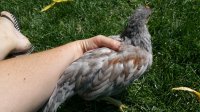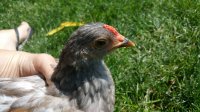junebuggena
Crowing
Well, they are about 4 months old and that means they are approaching egg laying, reddening combs and wattles are to be expected. And a male at that age would at least have some visible male feathering.What are your thoughts as to why you think all pullets, even with one have extremely long waddles and always red? Thank you!






